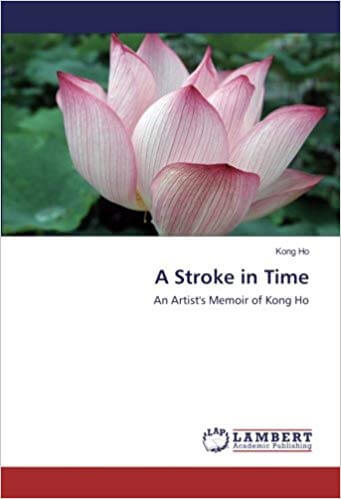Preface to the book Stroke of Time: An Artist’s Memoir, by Shui Kong Ho. Lambert Academic Publishing, Saarbrücken, Germany.

When I was a student, I thought of artists and their work as existing on an imaginary continuum, bridging the opposing aesthetics of Romanticism and Classicism. I pondered where different artists fit on this spectrum, whether firmly planted toward one end or the other, or hovering somewhere in-between. In time, my thinking matured, and I realized that art and artists are more complex than simple schemas can accommodate, but that mental model helped me assemble my fragmented knowledge of art history in a way that was clarifying and instructive.
If I had known Kong Ho at that time, I’m certain his artwork would have challenged my schema and spurred me to think more deeply, more quickly than I did. His work does not dwell on one end of the spectrum or the other, nor does it linger in the middle: it lives on both ends simultaneously, fervently, proudly. It is classical and romantic at the same time. Arising out of nostalgia, memories, and the sublimity of nature, Ho’s work would seem to be that of the dreamer, stirred by the passions, driven by intuition. And yet, he writes of his fascination with the instruments of designers, and with the exact mathematical equations that underlie many of his compositions—the hallmarks of a thinker.
Formally, his paintings are animated by a gestural application of paint in layered washes, drips, and splatters, but emerging from this randomness we find the most precisely painted forms, such as jade Pi disks and nautilus shells. His colors are vibrant and expressive (becoming more so in his recent digital collages), yet his technique can be controlled and linear.
It is intriguing to relate these competing forces in Ho’s paintings to the artist’s experiences living in both Asia (he was raised in Hong Kong and currently lives in Brunei) and the United States, and to the contrasting influences of Asian and Western art. Equally intriguing is the influence of eastern beliefs in shaping the artist’s work, particularly the Taoist concept of Yin-Yang, the reconciliation of opposing, but complementary, forces. Or, we might ponder his circumstances of being an artist with a disability living and working among the “abled.” The artist himself cites all these experiences, and there is no reason to doubt their impact.
What intrigues me more, however, is not that these diverse influences affected Ho’s work, but that he has welcomed them into his art. In this age of artists seeking to find a voice, to create with authority, and yes, to brand themselves, aesthetic extremism is often the quickest solution. It is far harder, however, to recognize conflicting experiences, to make artistic peace among them, and to do so in a way that is harmonious, unified, and meaningful. That Kong Ho has done exactly this, and produced artwork that is also beautiful, speaks to his seriousness of purpose.
This memoir reflects this seriousness and his keen self-awareness, too. Throughout the book, Ho investigates the sources of his inspiration, recalling both specific events and broader stimuli from the past. In the end, he is not so much an artist writing about his work, but an explorer seeking an answer to that most mysterious of questions: from where does one’s art come? I don’t know if writing this book has provided an answer, but I’m grateful he is asking the question.
